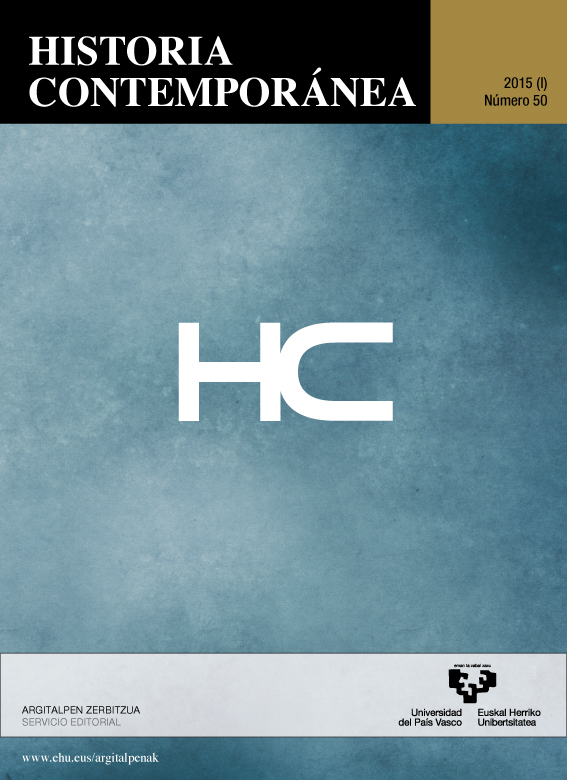The Party and the City. Models of organization and membership of the underground PSUC (1963-1975)
##plugins.themes.bootstrap3.article.main##
##plugins.themes.bootstrap3.article.sidebar##
Abstract
Even though the bibliography on the history of the communists in Spain during the Francoism has grown notably in the last years, our knowledge of the organizational structures that every communist territorial reality was endowed with to carry out its political work is still far from being satisfactory. Which form did the communists give to their organizational structure and for which purposes did they look with it? Which way was it thought to relate to the society? And in which measure did these decisions modify the way of doing politics of the militancy? This article proposes to answer these and other questions investigating the case of the Unified Socialist Party of Catalonia (PSUC), undoubtely the strongest communist nucleus of the country and whose organization changed radically into the two-year period 1969-1970: a vertical structure and little diversified to other decentralized and more open one. Such change allowed the party to grow quantitatively and qualitatively, to hold a closer contact with the Catalan society and to create a framework in which the militancy could act in a more creative and autonomous way than in the past.
##plugins.themes.bootstrap3.article.details##
Unified Socialist Party of Catalonia, Spanish Communist Party, Party organization, Clandestine militancy, Catalan society
Authors publishing in the journal Historia Contemporánea agree to the following terms:
- Authors retain full copyright of their papers, but also grant copyright to the academic publisher (UPV/EHU Press) for the purposes of copyright management, vigilance and protection.
- Papers are by default published with a non-restrictive Creative Commons CC-BY-NC-ND 4.0. You are free to: Share, copy and redistribute the material in any medium or format. The licensor cannot revoke these freedoms as long as you follow the license terms. Under the following terms:
Attribution — You must give appropriate credit, provide a link to the license, and indicate if changes were made. You may do so in any reasonable manner, but not in any way that suggests the licensor endorses you or your use.
NonCommercial — You may not use the material for commercial purposes.
NoDerivatives — If you remix, transform, or build upon the material, you may not distribute the modified material.
No additional restrictions — You may not apply legal terms or technological measures that legally restrict others from doing anything the license permits.
- If an author requires a more restricted CC license (e.g. CC-BY-SA), this can be provided by contacting our publisher at: publications@ehu.eus
- In particular, and without having to request additional permission, CC BY-NC-ND licensed papers can be deposited in institutional repositories and academic web sites.
- Postprints (i.e. accepted but non-edited versions of the manuscript) can also be pre-published online, providing acknowledgement of authorship and source is specified as above.
For non-standard uses of papers or materials published in Historia Contemporánea, please contact our publisher UPV/EHU Press at: publications@ehu.eus

